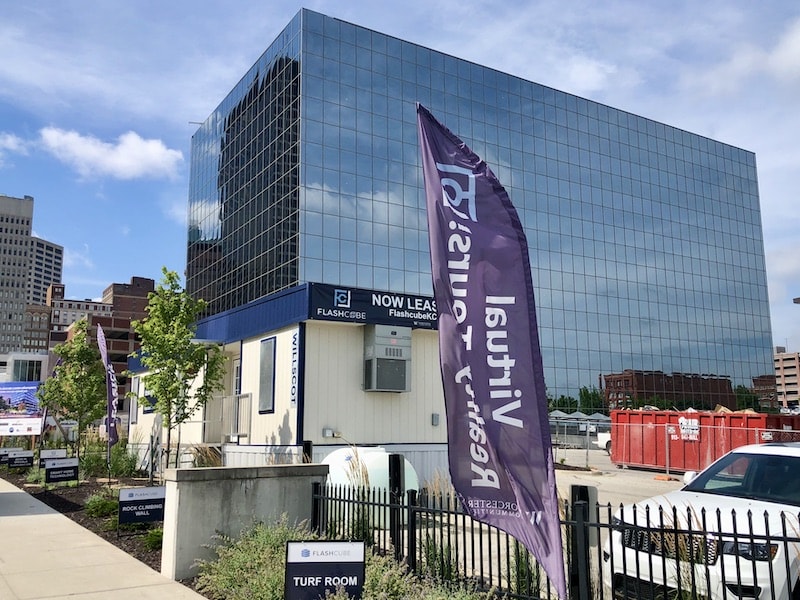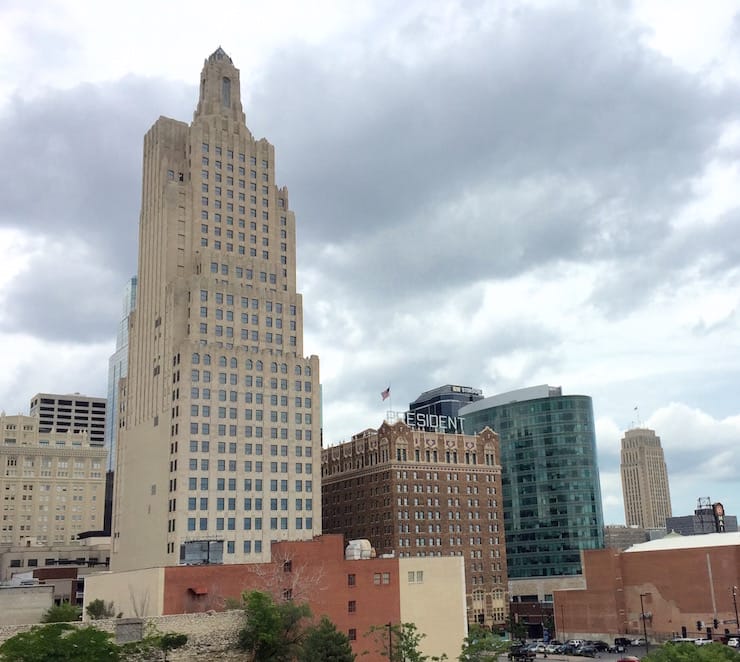KC Preservation Projects Failing Key State Incentive Program

Published December 1st, 2021 at 12:30 PM
By Kevin Collison
Early last month, the $69 million renovation of the former “Flashcube” office building at 720 Main into apartments received an honors award as an innovative preservation project from Historic Kansas City.
The city’s premier historic preservation organization also recognized the 273-unit West Bottoms Flats development at 925 Wyoming St. with its excellence award in the neighborhood stabilization category. That investment was $65 million.
It may be awhile however, before more historic residential projects in greater downtown receive similar recognition from Historic KC.
That’s because changes implemented the past couple years by the Missouri Department of Economic Development (DED) are making it much more challenging for downtown residential projects in Kansas City to qualify for the state historic tax credit program.
“The Flashcube would have an extremely difficult time applying if it did today,” said Elizabeth Rosin of Rosin Preservation.
“We’re also seeing projects put on hold in the West Bottoms. Until we figure out these issues, nobody wants to take on the risk.”

West Bottoms Flats project renovated three historic industrial buildings into apartments. (Photo courtesy BNIM)
Since the beginning of the current downtown revitalization effort in 2001, the renovation of its ample stock of underused or vacant historic buildings into apartments, offices and hotel rooms has been a major component.
The state program enacted in 1998 provides tax credits for 25 percent of the eligible cost of renovating buildings certified as historic by federal and state officials. Those credits then can be sold or transferred by developers to raise cash to help finance projects.
When combined with the 20 percent federal historic tax credit, Missouri’s program had contributed to the state’s reputation as being one of the more progressive in the country when it came to historic preservation.
The program however, has been criticized by some over the years as favoring big cities over rural communities, not steering enough investment to poor neighborhoods and not generating more new tax revenues for the state.
As a result, the State DED revised its evaluation formula to favor commercial preservation projects that would create jobs and emphasize projects in Census tracts where at least 10 percent of the residents are below the poverty line.

The Power & Light building was renovated into apartments, and the President Hotel across the street was revived, both with the help of state historic tax credits.
Developers applying for historic tax credits have their projects ranked on a point system by DED. An application must score at least 70 points to be considered eligible.
Most if not all of Greater Downtown including the River Market, West Bottoms and the Crossroads automatically lose 23 points because its Census tracts fail to meet the 10 percent poverty threshold.
“What has happened in downtown Kansas City is the area has had a lot of redevelopment happen so the poverty rate is less than 10 percent and it gets zero points,” said Rosin.
The DED also uses another criteria that awards 10 points based on new taxes created through jobs, another big strike against residential redevelopment plans.
Combined, the new criteria means a developer who wants to renovate a historic downtown building into housing can score no more than 67 points based on the location and planned use of their project.
“It’s made it very tough, almost to the point where developers aren’t pursuing state historic tax credits,” said Jared Campbell, an official with the Downtown Council. “They’re behind the eight-ball to start.”

The renovation of the historic Luzier Building was among the projects honored by Historic KC earlier this month.
Campbell said out of the 59 historic buildings on the National Historic Register in greater downtown that could qualify for state historic tax credits, 54 would score zero under the current scoring process.
“That is how detrimental the new application/scoring is to greater downtown KC since it immediately puts those projects at a disadvantage compared to other areas in the state,” he said.
The Downtown Council is working with Greater Kansas City Chamber of Commerce and the KC Economic Development Corp. to try to convince DED officials to revise their state historic tax credit formula.
One idea being suggested calls for at least some points to be granted for projects in a Census tract with between a 5- and 9.9 percent poverty level. That would improve its prospects for meeting the 70 point threshold.
Rosin, one of the state’s leading architectural historians, provides developers around the state with the research required to qualify as a historic building.
“I think we’re seeing a drop in activity in general although there are projects happening in places like Joplin and St. Louis,” she said.
The downtowns in those cities score better in the DED evaluation because their Census tracts meet the 10 percent poverty threshold, Rosin noted.
Campbell said the Downtown Council and other downtown advocates continue to meet with DED officials to discuss the impact its scoring system is having on downtown projects and seek changes.

RETROPROS was honored for saving this mural by Arthur Kraft before the Board of Education building was demolished.
“The focus has become more about helping disadvantaged areas than preserving historic architecture,” Campbell said. “It’s moved away from helping preserve buildings.”
In addition to honoring the Flashcube and West Bottoms Flats projects, Historic Kansas City also granted the Luzier Cosmetics Building project at 3216 Gillham Plaza its excellence award for best adaptive reuse.
Historic KC gave honors awards for adaptive reuse to the renovation of the Kansas City Club at 1228 Baltimore into the Hotel Kansas City, and the renovation of the Monogram Building at 18th and Wyandotte.
The renovation of the historic Netherlands Hotel at 3835 Main St. as apartments received an excellence award in the neighborhood stabilization category.
RETROPROS received an excellence award in the outstanding work by a craftsperson category for rescuing the Arthur Kraft Mosaic Mural from the former Board of Education building at 1211 McGee. The building was demolished earlier this year.


